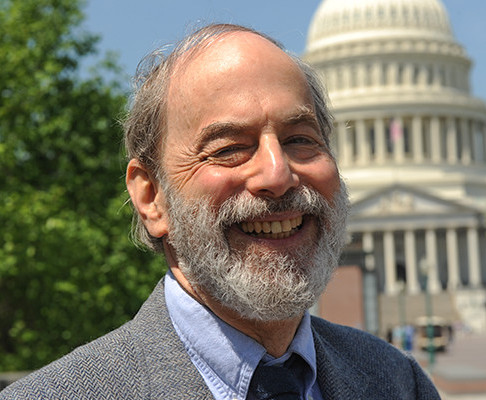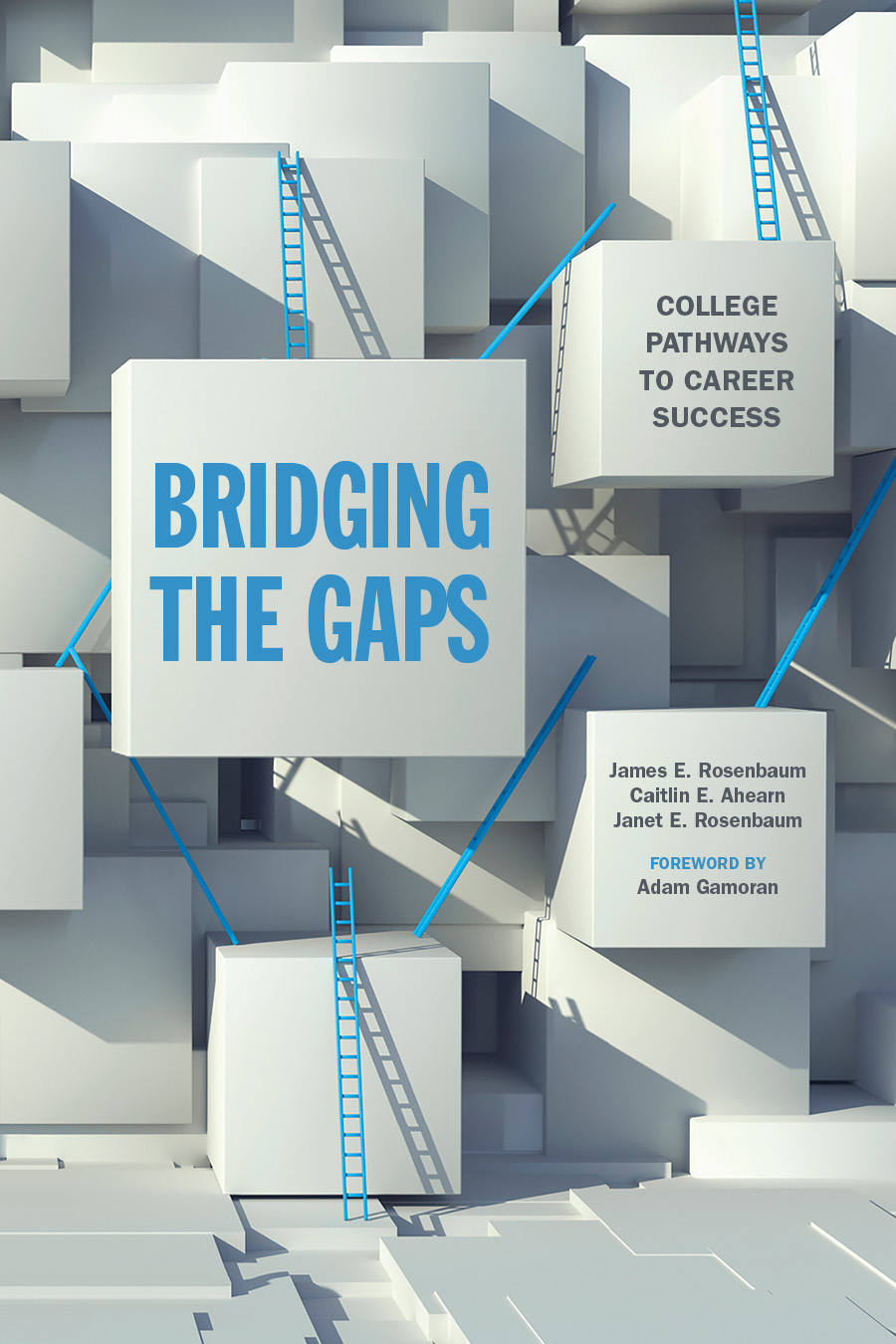There are two ways to look at America’s college-for-all movement. On the one hand, it represents a rare policy success: Today, 90 percent of high school graduates enroll in college within eight years of graduating from high school, up from 45 percent in 1960. On the other hand, it serves as a cautionary tale about the unintended consequences of even the best-intentioned policy initiatives: Many of these students leave college before finishing a degree or credential—only 15 percent of community college students earn a bachelor’s degree within six years of enrollment—to an unfriendly job market, already saddled with crippling student debt.
This epidemic of non-completion isn’t, in fact, new, although attention to the issue has increased in light of a college debt crisis that’s disproportionately affecting those who leave college without a degree or credential. And while a growing chorus of bipartisan politicians has expressed renewed interest in recent years in vocational training programs and apprenticeship models—both of which could provide different pathways for students uninterested in a traditional bachelor’s degree—policy implementation has been slow. American high school students continue to gamely enroll in local community colleges with plans of completing a B.A., despite limited odds of success for students at non-selective colleges. Meanwhile, inequality continues to rise, middle-class wages remain stagnant in the face of automation and offshoring, and employers (somewhat controversially) warn of a growing “skills gap.”
James Rosenbaum, a sociologist at Northwestern University, has been studying the college-for-all movement for decades and has become a leading voice in the field, thanks in part to his careful analyses of what colleges can do to improve completion rates, and his assertion that our blinder-like focus on ensuring that every high school student completes a four-year B.A. degree shortchanges both employers and many students. In a new book, Bridging the Gaps, Rosenbaum, along with co-authors Caitlin E. Ahearn and Janet E. Rosenbaum, delves into the shortcomings of the B.A.-for-all mindset, arguing for a dramatic shift in both the philosophy and procedures at the vast majority of post-secondary institutions in this country. The book also explores the institutional barriers that prevent many students from completing post-secondary degrees or credentials, and looks at what can be done to improve completion rates and labor market successes for students at community colleges and other post-secondary institutions.
Rosenbaum spoke with Pacific Standard about his book, out this week, and about why it’s time for a major re-evaluation of what college-for-all should mean.

I know you’ve been writing about this for a while. Give us a brief history of the college-for-all movement, and talk about the roots of some of the issues we’re seeing today.
[In the 1990’s], [o]ur society stated a goal that we really wanted to get more people into college. And we’re nearly there. In some really authoritative, national longitudinal studies, we analyzed that about 90 percent of high school graduates are going to college in the eight years after graduation. The question that raises is, what opportunities does [college] offer? And what problems does it offer? And that’s really where this book starts.
We’ve got new college students that never would have gone to college in prior decades. We have new jobs that, in fact, have appeared, or existing jobs that have upgraded their requirements. But we haven’t changed our thinking very much. And to jump to a kind of big generalization that I think I come out with, having done all of this research over the years, is that there are many more good options than we usually tell students about. If we just send everybody to B.A. degrees, and we seem largely to be doing that, we’re going to send them to almost certain failure. Students who are not prepared, who don’t really like that kind of studying, or that kind of work, and who don’t meet the official requirements, but it turns out they’ve got lots of other capabilities that they could really succeed with. And instead of pushing everybody into the same mold, we need to recognize that many new options exist, and how colleges can be redesigned to better accommodate them.
You really argue for a kind of wholesale revamping of what college-for-all means to include these different kinds of post-secondary pathways. Tell me a little about the evolution of the evidence on whether these sub-B.A. credentials are a good financial bet for students.

(Photo: Northwestern University)
One thing we really need to be aware of is that a lot of this stuff is not either/or. We say, “OK, so these students are going to do an associate’s degree instead of a bachelor’s degree.” No, you can do both! And, increasingly, colleges have found ways to combine them. That means if for some reason you can’t g[o] all the way [in a B.A.]—and there are many things that can interrupt [it]—you have something for it, there’s going to be a [labor market] payoff. It’s not either/or; you can do both.
In the 10 years from 2001 to 2011, the number of people getting an applied associate’s degree or a certificate increased by 78 percent. That’s really big. The first prediction that economists make is that, [if] we’ve got more people with those credentials competing [in the labor market], they’ll end up getting paid less. Uh-uh—it went the other way! In 1999, people eight years out of high school got no earnings payoff for either of the sub-B.A. credentials (the certificate or an associate’s degree). Ten years later, in the sample that we looked at, they get a significant payoff.
So the sub-B.A. credentials got more important and they got more valued. Why? The job market’s changing, the job market’s requiring more skills, and one of the big indicators of skills is these certificates. Some of these jobs, things like computer networking and various kinds of technical skills, didn’t exist 10 years ago. Now there’s big demand for them, and you need to have a certificate to get them.
You really push back strongly against the idea that these students are failing because of a lack of ability. And you outline these three transitional stages where you think institutions fail and kids get lost. Can you tell me about them?
The book is actually named for them—the three gaps. And the gaps are really quite outrageous. When we interviewed students, the students talked about these three things: taking courses without getting credits, getting credits that didn’t count for credentials, and getting credentials that didn’t have payoffs in the labor market.
Let’s focus for a minute on that first gap—specifically, the way that colleges currently administer placement tests. Because I’m not sure if people really understand that, when a student enrolls in community college, they have to take a placement test, and the outcome of this test really matters.
It matters more than the SAT. What’s happening is [the students] don’t even know about this test. They don’t anticipate this test. In one chapter, we describe how students walk in, and they’re taking this test, and their minds are wandering. They don’t realize how important it is, but it’s going to determine whether they really are in college credit classes.
And if they do poorly, they’re basically repeating high school courses and paying money for it. And I think it’s done for a good reason: Colleges don’t want to discourage students, so they don’t play this up. But they really should; they should be warning students that this is going to happen. Because, among other reasons, it’s rather easy to do a little bit of a refresher on some high school learning in the month before you start college. But the students don’t know to do that.
And moving on to the transition—progressing through college in a productive and efficient manner, ensuring that the courses students are taking will actually count toward the degree or credential they’re seeking—tell me about that gap.
Our usual approach is that these are college students; they can make their own decisions. Actually what that turns out to mean is they can go to their parents and ask for help about how to make these choices, if their parents went to college. But students whose parents didn’t go to college—and that’s a lot of students now, to our credit, we’ve got a lot of first-generation students—can’t get that information.

(Photo: Russell Sage Foundation)
We found that such students were making bad choices because they didn’t have good information. And they were losing a lot of time and, ultimately, dropping out with no payoff. So we recommend creating structured pathways where courses are structured, where their progress is monitored on a regular basis, where they have mandatory advising, where they have a quick win right at the outset, something that gives them encouragement.
And structuring things like time, having the same time slots every semester, [and having] dependable course offerings, when they’re needed, so that students who need a particular course at a particular sequence can count on it happening. Colleges cannot possibly offer everything to everyone, but if they structure programs, then they’ll have whole cohorts of students that have these same needs.
In the book, you write about two community colleges that are trying to do things differently—Harper College in Illinois and Guttman Community College in New York City. Can you pick one of these schools and explain what exactly it’s doing?
Guttman was designed at the behest of the mayor of New York to be a new community college that would do anything possible, and promising, to improve completion rates. Completion rates at the CUNY community colleges were bad. So they designed a whole new college, and they used a lot of the ideas from my prior book, and now we get a chance to see how they will work.
So [Guttman] created highly structured curricula. One of the big problems students have is they have to choose a program very quickly if you’re in a two-year program. And they end up making a choice that they later regret. And, generally, it’s an uninformed choice. We give students free choice; we just don’t give them informed choice. So Guttman has set up a first-year curriculum of courses that helps students learn about career options. And they do research, they report to other students in the class about these various options, and that helps enormously. So students at Guttman choose their major in March, after they’ve taken two quarters of this course. They know what they’re talking about; they’ve made informed choices.
You write that that these two schools also change the rules of failure, both by making it easier for students to succeed and by taking responsibility, as an institution, for their students’ success. This seems to be a fundamentally important culture change.
The social context that we’re in often defines what the requirements are of success. Here’s a very good example from Guttman. Guttman designed a curriculum where they take the usual semester and they divide it in two parts. The first [part] is your first chance at whatever course you’re taking. If you don’t pass it, you take a short version that kind of refreshes and fixes the things that you didn’t learn. And you have to pass the second part, but the first one’s not so important—you have a second chance to get it right. So all of a sudden, a first-time failure means nothing except that you’re going to do this again very quickly, and get it fixed. It takes away the stigma of failure.
This interview has been edited for length and clarity.




